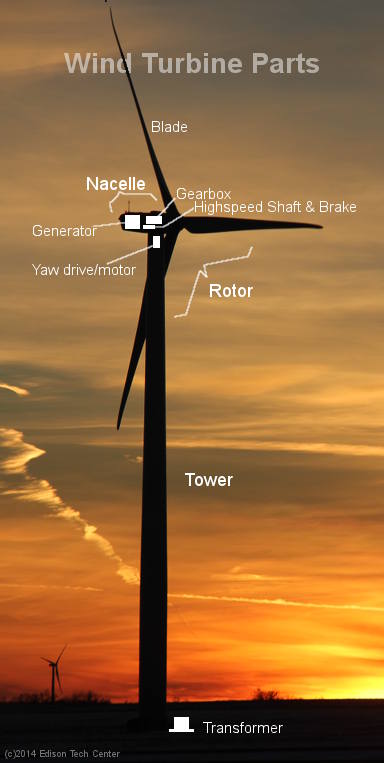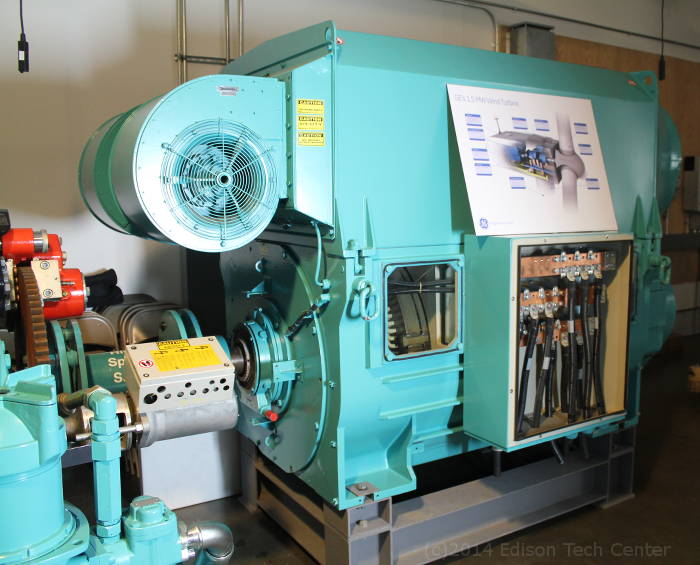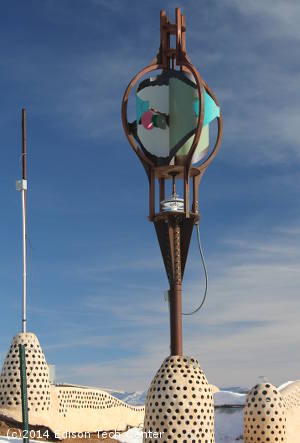Wind Power

 |
The Greeks were the first to convert wind power into rotating mechanical power, but it wasn't until the 1880s
that people began to design wind turbines which produced electricity.
The wind turbine has greatly increased in use since 2007 with wind now
producing 121 TWh (5% of all energy in the US alone, 2013). That number
grows significantly each year.
Engineer's Role:
Mechanical engineers working on windmills must deal with a long
list of challenges. Transmissions used to control the speed
of the rotating shaft are quite a challenge as high winds can break
connections. Designing a hollow 200+' tower which can withstand
difficult weather is difficult. The blades, typically 90' long must
be light, flexible and strong.
Electrical engineers design the generator and transformer system.
Wind Turbine Parts:
Tower - hollow tube of
steel used for support. Older windmills or small home installations
may have a trestle support. Trestles have a lot of drag and are
more prone to collapse in extreme weather when they reach larger
heights.
Nacelle - This houses
the many parts of the wind turbine including the generator, gearbox,
high speed shaft and break. There is instrumentation to measure
wind speed and direction on each wind turbine and that helps adjust
pitch and yaw. The high speed shaft gears can detach from the gearbox
if winds become too high or while servicing his needed.
Rotor - the whole assembly
including the hub and blades. The blades are often made of fiberglass
and are extremely strong yet flexible.
Transformer at the base
- this converts the power from the generator to a voltage which
can be put back into the grid.
|

Above: gearbox for a GE 1.5 MW wind turbine
Below: generator for the same wind turbine


Above: the blades are made with a fiber-reinforced construction
and most are 90 ft long. Mechanical engineers design the blades with reinforced
areas exactly where there are increased stresses.
History:
NASA and government funds greatly advanced wind technology in the 1970s
and 80s. Early installations at Altamont Pass, CA and Crotched
Mountain, NH were not cost effective, but necessary to develop the technology.
Since 2007 thousands of new wind turbines have been installed all over
the US, raising the monthly production of power from 2500 million kilowatt-hours
to 19,000 million kilowatt-hours.
 |
Today the states producing the greatest amount of wind power are Texas,
California, Iowa, Illinois and Oregon
Wind farms can be found all across the great plains of the US. Offshore
wind farms and mountain ridges also provide steady wind, however environmental
and aesthetic arguments have slowed development in these areas.
Small scale windmills:
Small electric wind turbines have been used to power farms and houses
since the 1980s. There are many configurations besides the typical
form you see in the photo to the left. Small scale wind turbines
are built quite differently than there larger cousins and often
can be repaired at home. The roots of local site small-scale wind
power in the US are visible across the Midwest and west in the form
of the old steel windmills which are often used to activate pumps
which draw water up from aquifers to feed livestock.
|
Video: Edison Tech Center
interviews Joe McBride from Northeast WindPower Resources talks about
home installation of small windmills:
 |
Left: Small wind turbine with
decorative design at the Earthship Biotecture community, Taos, NM
Sources:
Interview with John Synhorst, NREL. Edison Tech Center 2011
Interview with Joe McBride. Edison Tech Center 2009
General Electric
Hudson Valley Community College
Photos:
Edison Tech Center
Whelan Communications
|
Related Topics:








